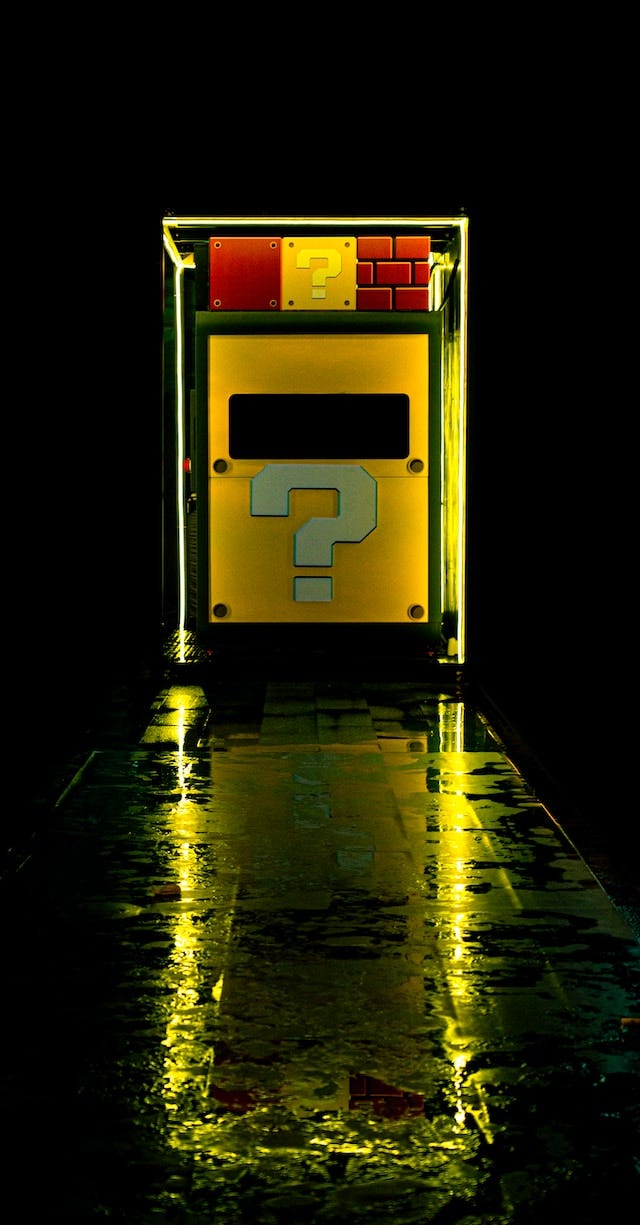As I prepare to teach my upcoming Writing the Strange: 6 Weeks, 6 Senses class, I’m considering senses such as sound that are underutilized in writing. Sound may include poetic techniques such as alliteration, assonance, and slant rhyme. It can also refer to actual sounds in what Mary Karr calls the “carnal world.” Zipping your reader into your narrator’s meat suit by using the 5 senses will enchant them! Although Mary Karr is not officially a witch, her emphasis on embodiment is one that witchcraft shares. The magic happens in the body for you and for your reader.
I decided to share “My Life with Cheetahs” by Brendan Sheehan because of their strong use of sound. Also, big cats align with the lion on the Strength card (see my post on Writing Lessons from the Strength card Part 1) in the Tarot. This piece was originally published in the journal One Complete Sentence.
My Life with Cheetahs by Brandan Sheehan
Mom went on a girls weekend to Vegas and stayed in a hotel casino famous for its elevator that roared like a cheetah every time the doors opened, and she loved the effect so much that as soon as she got home she made Dad trigger all the closet doors to play the same roar through tiny speakers mounted above the frames, which freaked out all of us boys—Bobby, Craig and me—because we used closets for things best kept hidden, items we reached for after dark, and just as we expected, our nights became filled with cheetah roars bringing attention to mischievous behavior like Bobby digging out his secret Nintendo controller so he could keep playing Contra instead of doing homework, or Craig pulling a Juggs magazine from the bottom of a Sports Illustrated stack, or me grabbing my shoebox and rereading notes with little hearts and bubble letters exclaiming You Float My Boat! that Amelia D’Amico slipped me during first period Social Studies, and yet as the years passed and we got older, the cheetah roars became background noise, sounding duller, wearier, less scary when closet doors opened for Dad gathering clothes to bring to his new apartment, or Bobby scrambling for his rig so he could shoot up after deciding a week of sobriety was plenty, or Craig storing his biker jacket and denim vests in a garment bag because he wouldn’t need them in Iraq, or me grabbing my shoebox and rereading notes that Justin Gaveston slipped me during sixth period Chemistry that didn’t have little hearts or bubble letters but rather chaotic declarations of true love, threats of suicide if we couldn’t run away together, and eventually after I’d opened the closet door, grabbed my shoebox and reread those notes hundreds of times, the cheetah went on the fritz, roaring on a warped loop, a sad dying roar fighting through static, a roar that continued even after I’d shut the door, kissed Mom goodbye and left the house.
What makes “My Life with Cheetahs” fiction rather than poetry? It’s actually debatable. Personally I think it leans more toward narrative than the use of sound in terms of poetic technique. However, the engine of the long, run-on sentence could be considered more poetry than prose.
Honing in on the sound, we get both the visceral quality of the “roar” but also the funny and strange way the door has been transformed into an electronic cheetah. This technique is called defamiliarization. Defamiliarization can be conjured willfully like when a surrealist poet creates an impossible image. Consider Andre Breton’s images in “Free Union” such as “My wife whose hair is a brush fire/Whose thoughts are summer lightning.” On a rational level, we know he can’t mean these things literally though the concrete images they invoke are exciting. On a magical level, anything can happen in a poem, especially when we’re living in Andre Breton’s meat suit.
What’s striking to me about “My Life with Cheetahs” is how the roaring door becomes a metaphor for the secrets each family member keeps and the passage of time. It works so well because it is a real door. Sheehan finds the magical in the mundane.
In poetry, often there is a volta or turn at the end. This can be a radical change or break in the previously established pattern. Throughout the piece, the roar of the door weakens with age and use. By the end, “the cheetah went on the fritz, roaring on a warped loop, a sad dying roar fighting through static, a roar that continued even after I’d shut the door, kissed Mom goodbye and left the house.” Besides the physical sounds like “warped loop,” “dying roar,” and “static,” we get one of the few employments of the poetic technique of rhyme with the perfect rhyme of “roar” and “door” close enough together that they really pop. This is the “volta” for me at the end: even as the door’s roar weakens, Sheehan uses the poetic technique of perfect rhyme for the first time, creating the paradox of a strong sound even as the door’s roar is dying.
If you think this technique is just for poets, think again. Consider the brilliant novelist (and poet, true) Denis Johnson’s short stories in Jesus’ Son. In “Car Crash While Hitchhiking,” he uses assonance: “The travelling salesman had fed me pills that made the linings of my veins feel scraped out. My jaw ached.” He uses alliteration with the image of clouds like “great gray brains.” He uses perfect rhyme: “A beautiful nurse was touching my skin. ‘These are vitamins,’ she said and drove the needle in.” Sound is another way that good writing connects with witchcraft: our words can cast an incantatory spell.
Most poets will caution against using too much perfect rhyme because it can sound sing songy, like you’re rhyming just for the sake of rhyming in an obvious way, or you’re stuck in the 19th century. But careful use of the perfect rhyme can pack a punch as it does at the end of Sheehan’s flash piece and Johnson’s story. Perfect rhyme has connotations of closure, like shutting a door. That’s also part of why we caution against it: much of our contemporary world is ambiguous and many readers will chafe against an ending that wraps up everything with a bow. However, when you bypass the rational mind with sound, you get that feeling of arrival, the satisfying ping of THE END, without becoming reductive or sounding like a Hallmark card. It also works so well in these prose pieces because it is internal rhyme and therefore less heavy-handed than an end rhyme in a poem.
What else strikes you about “My Life with Cheetahs”? Please let me know below or ask me questions!
PROMPT:
Write a piece (can be any genre) composed of one long, run on sentence. Try to include at least 2 of the 5 senses (sight, sound, touch, taste, and smell). You might want to lean heavily on one of these as Sheehan does with sound in his piece. You might also want to play with poetic techniques like alliteration, assonance, and rhyme…going easy on the rhyme or using slant rhymes instead of perfect rhymes for the most part.
This is a good time to say that any “rule” I give you has been broken and you can break them too! However, as the saying goes, “Know the rules before you break them.” It’s a cliche but true.
I look forward to hearing your thoughts and reading your work!
Also, I’d love to see you in Writing the Strange: 6 Weeks, 6 Senses. Only 2 spots left!🔥







Hi Erica, this is a single-sentence piece called Blue High Heels - 431 words - I'd love any and all feedback (I like to know what my words actually accomplished!) I'm hoping this is the correct place to post it, if not let me know. Thanks in advance.
Blue High Heels
© Claudia McGhee
It's one of those can't-find-my-left-shoe days, dammit, gotta go back upstairs and change this outfit, my very favorite navy blue suit, slim jacket and sexy pencil skirt, to something that matches black leather loafers, so I know I'm gonna be late for work since I haven't even left the apartment yet because of the amaryllis—yeah, that one, the one on top of the cabinet in the corner that I haven't watered in weeks because, yep, you got it, I thought it was dead until just this second, I just now finished searching under the sofa for the missing blue high heeled shoe, the left one, well you know how that is, I'm on my belly on the wood floor looking sideways into the dark under there, and there's a bump over in the far corner by the stumpy back leg that might be a shoe, but it turns out to be, god I hate to say this out loud, but, it's a gross dust cluster of cat hair all clung together with cobwebs, and when I give up looking under there and sit up, there's a coating of cat hair on the sleeve of my blue jacket, so I give up and try to get off the floor, y'know it's harder and harder these days to get my feet under me, I'm not so good at squats anymore, but I get my elbows on the sofa cushions and heave myself up and whammo, there it is, that amaryllis I left in the darkest corner of the living room—and I'm just, just, I'm just dumbstruck by that single green leaf, that two foot long graceful curving blade, (okay, okay I held my hand up and that leaf is three handspans tall give or take a few inches—and I know the spread of my thumb to pinky is about eight inches), and it's like life itself leaping up from that brown peat, brown even though it's covered in a layer of dust, I mean, you'd think after blooming how many times in the last few years there wouldn't be any more nutrients left in that peat, right?, and there's that dead-looking corm, all dried-out peeling and papery, poking up out of the dust, and then suddenly there's this pale green-white neck and the leaf above it gets greener and darker and more intense the wider it gets—yeah, well, I guess I won't make it to work today, I'm gonna pour myself a shot of rum and just sit down on this sofa and watch this crazy, out-of-season amaryllis grow.